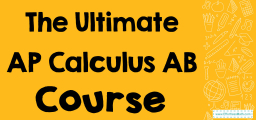A Comprehensive Look at Average vs Instantaneous Rate of Change

Average Rate of Change
- Definition:
The average rate of change of a function over a specified interval gives an overall idea of the function’s behavior between two points. It’s like looking at the average speed of a car over a road trip.
- Mathematical Expression:
For a function \( f(x) \), the average rate of change between two points \( x = a \) and \( x = b \) is calculated as:
\( \frac{f(b) – f(a)}{b – a} \)
This formula represents the slope of the secant line passing through points \( (a, f(a)) \) and \( (b, f(b)) \) on the graph of \( f(x) \).
- Interpretation:
The average rate of change tells us how much the function’s value changes on average for each unit increase in \( x \) over the interval \([a, b]\).
Instantaneous Rate of Change
- Definition:
The instantaneous rate of change is the rate at which a function changes at a specific point. It’s akin to checking the speedometer of a car at a precise moment.
- Relation to Derivatives:
The instantaneous rate of change of \( f(x) \) at \( x = a \) is the derivative of \( f(x) \) at that point, denoted as \( f'(a) \).
- Mathematical Expression:
It is defined as the limit of the average rate of change as \( b \) approaches \( a \):
\( f'(a) = \lim_{b \to a} \frac{f(b) – f(a)}{b – a} \)
This limit, if it exists, is the slope of the tangent line to the curve \( f(x) \) at the point \( (a, f(a)) \).
- Interpretation:
The instantaneous rate of change gives a precise value of how fast the function is changing at exactly point \( a \).
Comparison and Real-World Applications
- Average vs Instantaneous:
- The average rate provides a broader view over an interval, whereas the instantaneous rate is specific to a single point.
- For example, the average rate can be like calculating the average speed of a trip, while the instantaneous rate is like checking the current speed at a particular moment.
- Applications:
- In physics, these concepts are crucial for understanding motion—average velocity vs instant velocity.
- In economics, they help in analyzing the overall growth of a company over a year (average) versus its growth rate in a specific quarter (instantaneous).
Related to This Article
More math articles
- How to Interpret Remainders of Division Two-digit Numbers By One-digit Numbers
- How to Overcome Praxis Core Math Anxiety?
- How to Graph Absolute Value Inequalities?
- Full-Length 6th Grade SBAC Math Practice Test-Answers and Explanations
- The Best Math Apps to Make Learning Easier
- Full-Length 6th Grade PARCC Math Practice Test-Answers and Explanations
- Praxis Core Math Practice Test Questions
- How to Help Your 4th Grade Student Prepare for the District of Columbia DC CAPE Math Test
- The Butterfly Effect in Mathematics: Small Changes, Big Impact
- 8th Grade NHSAS Math Worksheets: FREE & Printable




























What people say about "A Comprehensive Look at Average vs Instantaneous Rate of Change - Effortless Math: We Help Students Learn to LOVE Mathematics"?
No one replied yet.